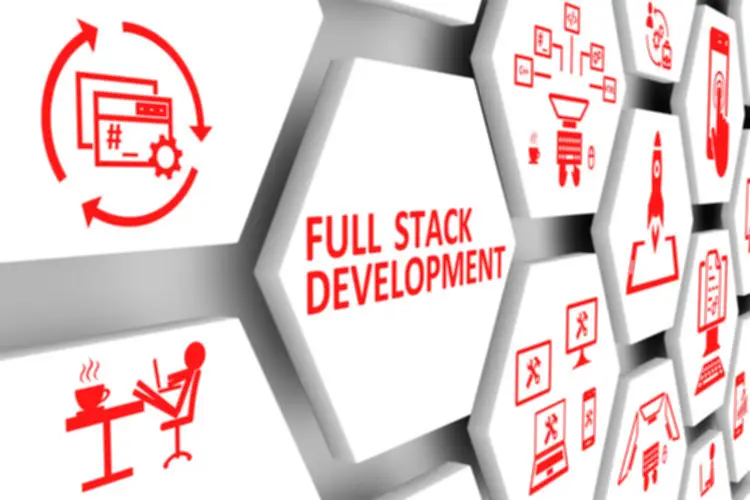Transform Your Business With AI Software Development Solutions https://www.globalcloudteam.com/ — be successful, be the first!
Container Orchestration Instruments & Platforms

In distinction with conventional servers and digital machines, the immutable paradigm that containers and their infrastructure inhabit makes modifications post-deployment nonexistent. Instead, updates or fixes are utilized what is container orchestration by deploying new containers or servers from a standard image with the mandatory changes. Try, buy, and handle certified software throughout public clouds, non-public clouds, and your datacenter. It’s a less complicated method to entry the software program you already rely on, build in a unified Kubernetes-based environment, and deploy wherever.
Use Instances Where Docker Is Most Well-liked
It surveyed a quantity of tools, mentioned some challenges posed by container orchestration and how one can handle them, and explained how CI/CD can simplify container orchestration by way of Data Mesh automation. Container administration and orchestration may be extra advanced than different infrastructures. The complete container orchestration process must be safe as attackers can exploit any misconfiguration, bugs, or other vulnerability.
Use Circumstances And Applications For Docker And Kubernetes
Armed with an informed viewpoint can allow you to anticipate and successfully meet the evolving calls for of modern software growth — and with optimal ROI. Applications packaged in containers can run uniformly and reliably throughout different computing environments, from on-premises information facilities to public clouds. During growth, the container engine facilitates speedy prototyping and testing, allowing builders to iterate quickly and effectively. As the appliance matures, the orchestrator transitions it into manufacturing, offering a sturdy and scalable foundation for dealing with real-world workloads. The container engine creates and packages particular person containers, while the orchestrator engine manages and orchestrates a number of containers throughout a distributed infrastructure.
Kubernetes — The Most Well-liked Container Orchestration Tool
By closely integrating with the underlying infrastructure, they’re serving to us not solely with containers but the whole infrastructure management. This is very true in cloud environments, where container orchestration platforms can deal with networking, storage, and even provisioning new VMs to the cluster primarily based on fully customizable configurations. Apache Mesos is a cluster manager that may run containerized and noncontainerized workloads. Its scale and adaptability make it a favourite of companies like Twitter, Uber, and Netflix. Container orchestration is a process that automates the deployment and administration of containerized applications and companies at scale. This orchestration includes provisioning, scheduling, networking, ensuring availability, and monitoring container lifecycles.

MongoDB fully supports use of Kubernetes by providing three operators — extensions to the Kubernetes management airplane that make using specific applications much simpler. Learn more about Cisco merchandise and solutions related to container orchestration. Originally developed by Google and donated to the Cloud Native Computing Foundation (CNCF) in 2015, Kubernetes has turn out to be accepted as a regular for open-source container orchestration.
Now that you realize the fundamentals, let’s discover a few of the hottest container orchestration platforms. It permits you to enable fundamental container orchestration on a single machine in addition to join extra machines to create a Docker Swarm cluster. You solely have to initialize the Swarm mode after which optionally add extra nodes to it. In order to make these particular person items work as one utility, they need to discuss to one another. So, instead of focusing simply on the code, you have to start taking excellent care of networking and communication between microservices.
- (This helps make them resilient too.) As a outcome, you can have many more containers running at one time than you’ll VMs, and the lifespan of any given container occasion is usually a lot shorter—minutes or hours.
- The MongoDB Atlas Kubernetes Operator works slightly in a different way to MongoDB’s different Kubernetes Operators.
- He has intensive hands-on expertise with public cloud platforms, cloud internet hosting, Kubernetes and OpenShift deployments in manufacturing.
- The container orchestration system additionally requires much less time and human capital to handle than handbook deployments, saving even more.
- The NVIDIA device plugin permits GPU support in Kubernetes, so developers can schedule GPU assets to construct and deploy functions on multi-cloud clusters.
As some of the popular open-source container orchestration device, Kubernetes presents a wide array of advantages, including auto-scaling and automated load balancing. Containers can run on virtualized servers, bare-metal servers, and private and non-private clouds. But managing the deployment, modification, networking, and scaling of multiple containers can quickly outstrip the capabilities of improvement and operations groups. These tools present the framework for creating, deploying and scaling containers. Here is a listing of the fourteen finest container orchestration tools, highlighting their key features, execs, cons, and pricing plans. Mesos is the primary open source cluster administration service to deal with a workload in a distributed setting using dynamic useful resource sharing and isolation, the segregation of a program from different operating processes.
In addition, containers allow purposes to be run in an isolated style, making web-based functions less vulnerable to infiltration and hacking. Container orchestration allows systems to broaden and contract as needed, maintaining effectivity and maximizing processing and memory assets. The modular nature and interoperability of container-based systems requires much less time and manpower to build, preserve, and manage advanced methods.
However, with an unlimited array of free and paid choices available, choosing the right orchestration software can really feel overwhelming. First released by HashiCorp in 2015, Nomad was initially designed to be a general orchestrator. Now, Nomad is a container orchestration tool that gives flexible cluster management and the scheduling and deploying of duties among the many worker nodes in a cluster. Worker nodes inside the Kubernetes cluster perform actions facilitated by the Kubernetes API.
Companies which are simply getting started with containers and Kubernetes should pay close attention to those points when selecting partners and administration instruments. Software-as-a-Service (SaaS) and hosted options that provide Kubernetes administration, monitoring, safety, and different capabilities are also out there. The SaaS model, specifically, supplies fast time to worth, robustness and reliability, versatile pricing, and ease of use. In fact, nowadays, many container orchestration platforms are starting to migrate from Docker to opponents like containerd or Podman. First introduced in 2014 by Docker, Docker Swarm is an orchestration engine that popularized the utilization of containers with builders.
It allows resource allocation utilizing modern kernel features, similar to Zones in Solaris and CGroups in Linux. Additionally, Mesos makes use of Chronos Scheduler to start and stop providers, and the Marathon API to scale services and balance hundreds. To let builders define inter-framework insurance policies, Mesos makes use of a pluggable software module . Gcore Managed Kubernetes is a service that permits you to run production-ready Kubernetes clusters with ease.
Docker Swarm comes with its native Docker containers clustering feature, turning a pool of Docker engines right into a virtual Docker engine. It additionally comes with straightforward setup and management; that is, it has the aptitude to manage a cluster of Docker nodes as a single unit. Kubernetes automates this course of, permitting for dynamic scaling primarily based on software demand without manual intervention.
Deployed apps benefit from built-in monitoring, log collation, and safety by design. Fargate mechanically scales your compute resources to satisfy your app’s requirements. The Portainer dashboard displays all your environments and the workloads within them. Portainer additionally centralizes consumer administration to make it easier to soundly grant access to your clusters. Container orchestration must be supported by a strong toolchain that lets you deploy, configure, and monitor your purposes. When deciding on a tool, you must contemplate its ease of use, how nicely it integrates with different solutions, the executive overhead it creates, and its monitor document for security and support.
